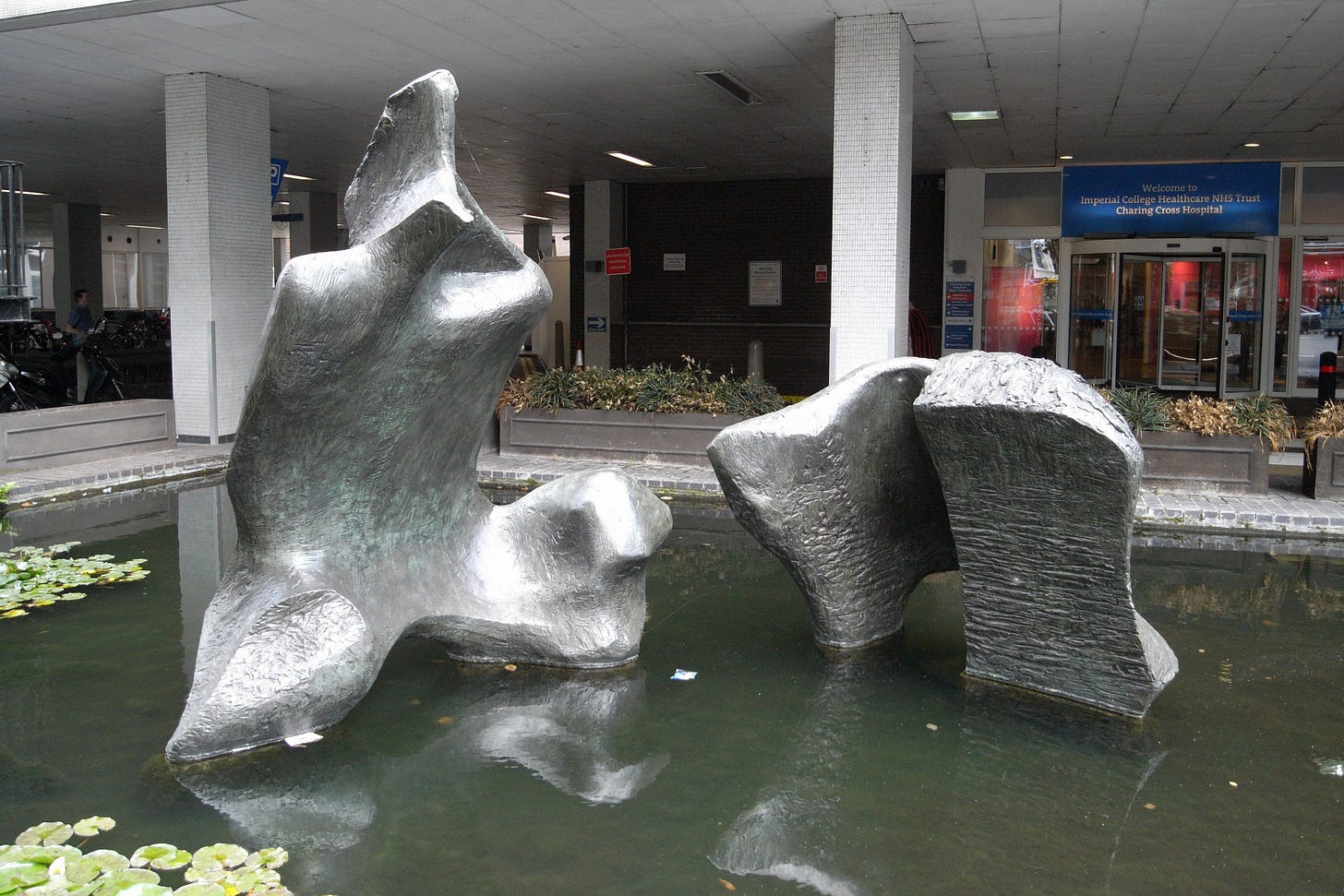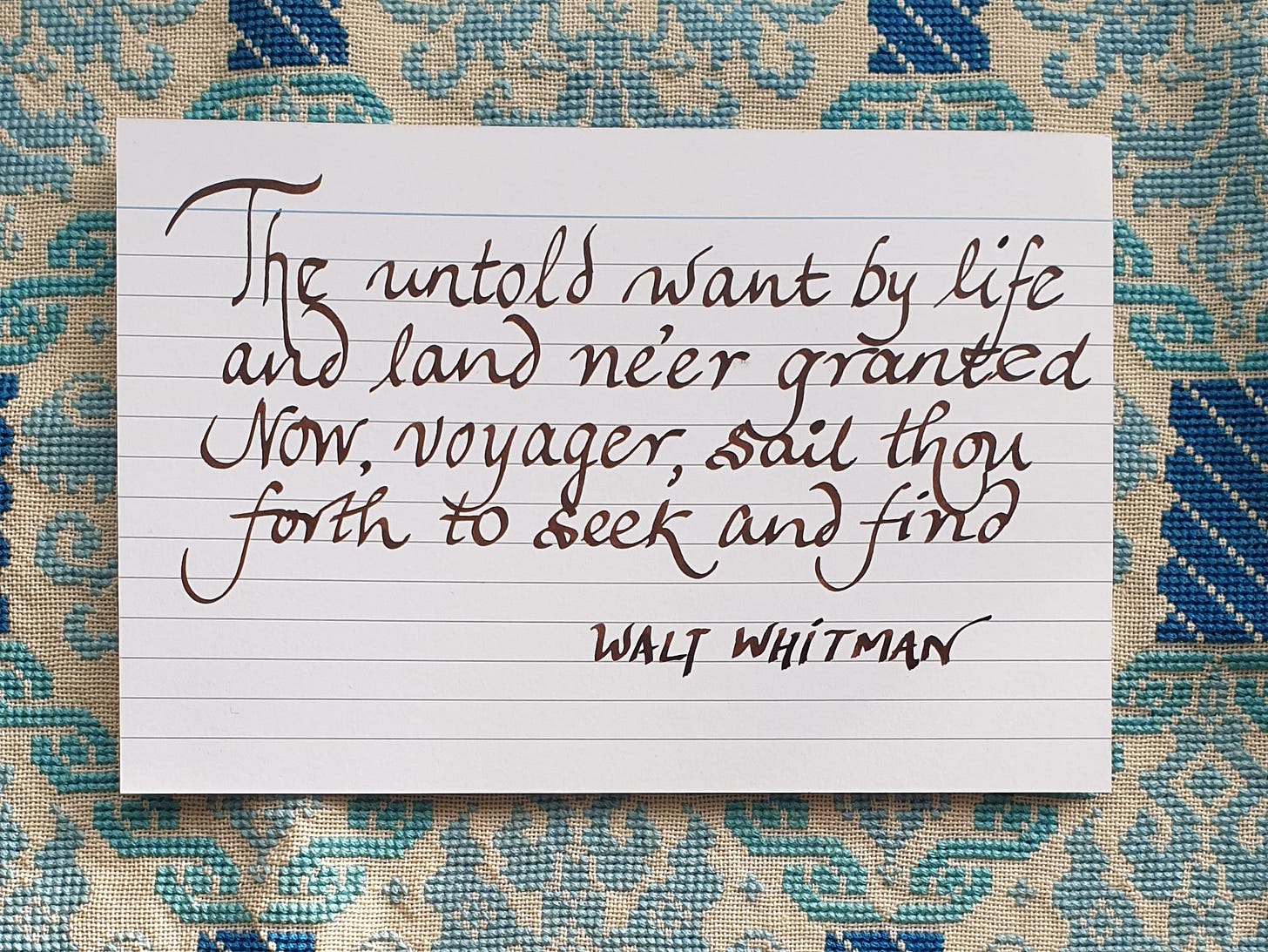(Image credit: Alison Saeng on Unsplash)
Happy new year everyone! I hope that this year, the last of this 9-year cycle, has started well for you.
January is a month of significant life anniversaries for me. Mama passed away eleven years last week; I left my university job in Tehran seven years ago this week; I was given a liver cirrhosis diagnosis five years ago this week; I sold selling the flat I grew up in Athens a year ago yesterday.
Each in its own way, these milestones have been significant. As each years turns, spiral-like, I revisit them mentally and emotionally, and contemplate how I felt then and at every now. I am putting together this post on 22 January 2025, on the very day I received the liver diagnosis in 2020, but the account that follows was written shortly afterwards in the same year. I am re-visiting it today to honour the fifth anniversary of that momentous event that set off a still-ongoing healing process (time references kept as in the original.)
That day, a Wednesday, like today, began like any other Wednesday that term. I went to a memoir writing workshop in Morley College, Waterloo; chatted with classmates in the college cafeteria over lunch; took the scenic route on board three London buses through Pimlico and Westminster to get to a hepatology appointment at Charing Cross Hospital.
(Image credit: By Patche99z - Own work, CC BY-SA 3.0, here)
I arrived early, so I sat on a ledge to look at the sculpture in the ornamental pool in the forecourt. The sign reads: Henry Moore OM - 1898-1986 - Reclining Figure 1962 – Half size model for sculpture at the Lincoln Centre, New York – Tate: Presented by the artist 1978. The figure is reflected into the muddy water of the pool: as if there’s much more below the water surface. I snapped a picture of the statue against a background of an ugly metallic staircase and a bike chained to the railings behind it, and posted it on Instagram as I waited to be called in.
Eventually I sit with the liver specialist at Charing Cross Hospital, London. She turns the computer monitor towards me.
“Here are the results of the fibro scan. I’m afraid we are looking at substantial hardening of the liver, very probably cirrhosis.”
I stare at the screen.
“That’s not what we expected, is it?” she continues.
No, I nod. She exudes warmth, waits.
“Is it reversible?”
“Well, yes and no. Generally, liver cirrhosis is non-reversible. However, if we can eliminate or at least mitigate the factors, we can arrest the progression of the disease, and the liver can regenerate itself to an extent. On the other hand, the liver can continue to function adequately even with cirrhosis, and in your case, it seems to be functioning normally, so yes, your condition is treatable.”
I still don’t know what to say.
“I know it is too much to take in at once. Do give a ring to my secretary if you need to ask any questions.”
I walk through the revolving doors of Charing Cross Hospital into the darkness. The reclining figure has now lost her previous reflection and seems to be sitting in a pool of ink. She – I think it is a ‘she’ – is almost mobile: she seems to be rising up, channeling the energy of her body emerging from the water – ink? A strong torso with a rudimentary head and a solid, larger-than-life leg section. (The surgeon who replaced both of my hips less than two years ago in Tehran had said, “You’ve got solid, strong bones, well-built muscles – I have no idea why the hips gave way.” Idiopathic, he wrote on his report. In Greek, idios: the self; pathos: suffering.)
I catch a bus to Hammersmith, walk over to the 218 bus stop, and sit in the cold waiting for the driver to open the door to the next bus. I google “liver cirrhosis”: my liver has become a knot of scar tissue over scar tissue, suffocating the healthy cells that keep me alive. I am one step away from either liver failure or liver cancer.
I click on “factors.” Alcohol, environment toxicity, viruses, inflammation, excess weight.
The bus driver opens the door, waves me in. I settle in the seat for people with restricted mobility.
I run through the factors in my head: I don’t drink. I don’t know of any viruses I might have had. I have lived in the world’s sixth more polluted city for twelve years: I have woken, driven, worked and slept in the smog of industrial pollution and toxic car fumes that still hang like a curse over Tehran. I was diagnosed with diabetes there. I lost both parents within forty days of each other, without making peace. I also lost both hips in the space of a couple of months. My body is riddled with inflammation. I have been carrying extra weight around since I remember myself, and a walking stick for the last four years.
Fourteen years ago, I had none of the risk except the weight (which I knew about) and a well-concealed, tangled ball of emotions (which I didn’t). I continued to force-feed my body “against my better judgment”, as they say – except I did not see my judgment as “better”. I also lost something else much harder to pin down; maybe I never had it. If there is to be a future (and even if there isn’t), I must do exactly this, find the missing piece.
The expression “against my better judgment” seems to hold some promise.
This piece was written back in 2020. I honour this anniversary as the moment when I finally heard the alarm clock instead of pressing the snooze button and going back to sleep. I may have deliberately ignored the alarm so fervently that I covered it over with all sorts of stuff: busy-ness; the moving back and forth between London and Tehran; stuffing the mouth to keep it from talking. But it manifested as a permanent sadness that coloured all my life, like a drop of blue ink in a glass of clear water.
A complex exploration and healing process was set in motion at the moment of diagnosis: exploring, reading, journaling, writing, talking therapy, more recently singing. Writing this newsletter and reading your comments for the last four years has been part of the healing process. Dear readers, thank you.
Over the last five years, I went through a phase feeling that anger was dressed up more respectably as sadness. It wore a longline bra and shaper shorts to look more appealing and acceptable – to whom? The world at large, an indeterminate world in Mama’s mind, which in any case couldn’t really care less. The physically restricted body felt the disapproval, the tacit verdict that it was too big, too curvy, too much, but didn’t know any better than to submit to Mama’s well-meaning but damaging interference. The body – and this was only my retrospective assumption in my late fifties – kept score: it felt the anger that I was not allowed to feel, and stored it for future use. Much like the discovery of a stash of old sovereigns sewn inside an old mattress, the anger turned out to be a treasure, spent on the journey that I had refused to take for so long. The life-long journey is still underway, but is now using alternative, less ego-friendly, fuel.
I often find myself in Hammersmith Bus Station, waiting for the 218 driver to let passengers onboard. On the day of the diagnosis it was already dark when I sat at the bus shed looking up liver cirrhosis on Google: it was early evening, one month into winter. What I am about to say cannot be factually true, I know: but my default recollection of the 218 bus shed is set on a sunny evening, and I glance straight ahead at the western sky behind Hammersmith Shopping Centre. The fluffy clouds, trimmed in gold, highlight the sunset.
When little, my daughter The Olive Tree used to ask, “Where does the sun go when it sets? Does it go to bed?”
“No, kouklitsa mou, my little dolly, it rises somewhere else.”





Beautiful❤️
Loved reading this Sofia xxx It was lovely seeing you in Hammersmith last week - you're such a gentle and beautiful soul xxx